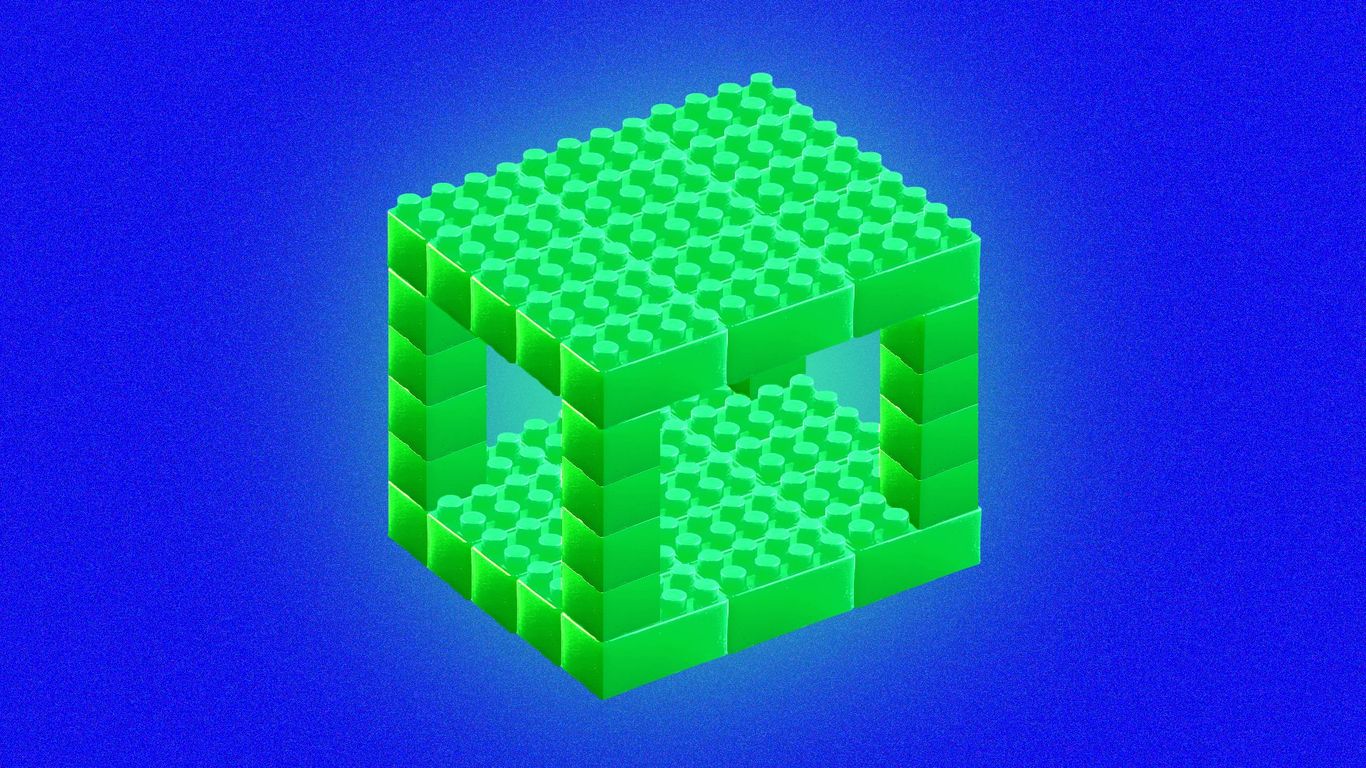
Aura is the rare protocol in decentralized finance (DeFi) showing double-digit growth over the last month, with $419 million in assets committed to it.
Why it matters: In a bear market and an economic downturn, people are less hungry to put their wealth in a risk asset like crypto, and even less likely to entrust that asset to some weird third-party piece of code. So if one risky arrangement is growing, something unique must be going on.
How it works: The Aura Protocol, which only launched in June, is a meta-protocol, in that it depends on another protocol.
- Specifically, Aura improves its users returns when they make a long-term bet on Balancer, a self-balancing index that started on Ethereum.
Balancer’s basic function is to manage pools of tokens that automatically rebalance as prices change.
- So a 50/50 ETH/USDC pool would automatically trade ETH for USDC as the price of ETH went up, and vice versa.
Balancer had previously been governed by its BAL token, but in March it switched to a new token, veBAL, a BAL derivative.
- People who enable Balancer to work by entrusting assets to it collectively earn around $700,000 in fresh BAL tokens each week for doing so.
What changed: The March switch required users to commit their BAL to one of Balancer’s pools in order to vote. This has the effect of taking BAL off the market, to an extent (which supports its price on the market).
- When they do that, and if they commit not to remove their BAL deposit for a certain amount of time, they get veBAL (the derivative). This is what has the voting powers now.
Crucially, veBAL’s voting power is time-weighted. The longer the lock, the bigger the vote.
- Additionally, veBAL gets a revenue share. Every time someone uses Balancer to trade tokens, they get charged a small fee (it varies by the pools used).
- Those fees get split between the people who provided funds to the pools used for the trade and Balancer protocol itself. Of the latter, 75% goes to holders of veBAL (the rest is held by Balancer to use operationally).
The intrigue: Aura asks users to use Aura to make that commitment not to withdraw, instead of committing themselves directly. And this has certain benefits for users.
- Aura will regularly re-up all its users’ lock on Balancer, so Aura votes always have the maximum power. Plus, it will collectivize the cost of re-upping commitments to the pool, saving everyone money.
Meanwhile, it also rewards those users in its own token, AURA.
- Aura also collectivizes power over which pools to reward the most in fresh BAL (back to the beginning). This can be a powerful tool for projects to support the liquidity of a certain token.
Quick take: DeFi is all about innovating on the ways in which people govern themselves. Practitioners call this coordination.
- Profit has always been a powerful coordination mechanism.
Flashback: History is repeating itself, and the history isn’t even that old. If this all sounds arcane, a project called Convex did the same thing on the decentralized exchange Curve, and it was a huge success.
- Curve is the third largest DeFi protocol today, with $6 billion in assets locked in it. Convex is 6th with $4 billion.
- From 2020 to 2022, the battle to control Curve’s rewards became known as the Curve Wars. It had basically all the same features.
- It got out of hand. At the start of the year, both protocols had over $20 billion in them, each.
Of note: Aura counts as Weird DeFi.
The bottom line: Aura already controls almost a third of all the veBAL in existence, and Balancer deposits are rising again, slowly.
This news is republished from another source. You can check the original article here

Be the first to comment